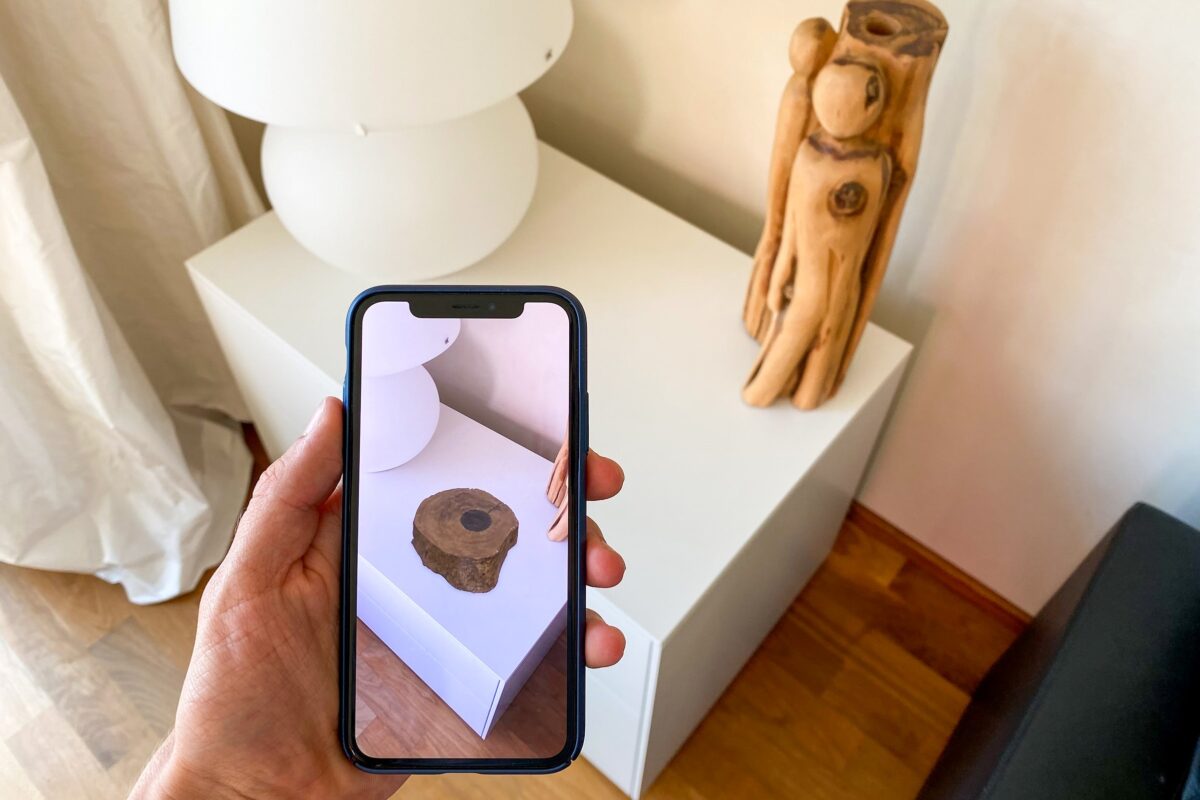In recent years, there have been a surge in the use of augmented reality (AR) and virtual reality (VR) technologies. From gaming to healthcare, these technologies have been used in a variety of different industries. Now, businesses are starting to find new and innovative ways to use this technology to create interactive product demos.
Using AR and VR for product demos can create immersive experiences that give potential customers a better understanding of what the product is like and how it works. This technology can be used in a number of different ways, each of which can have a positive impact on sales.
In this blog post, we will take a closer look at how AR/VR technologies can be used to create interactive product demonstrations and explain why they are so effective.
What are AR/VR technologies
AR/VR technologies are slowly becoming more mainstream, with a variety of applications in both the gaming and business world.
AR, or augmented reality, is a technology that superimposes computer-generated images onto a user’s real-world view. This can be done in a number of ways, including through head-mounted displays, contact lenses, or projection systems.
VR, or virtual reality, on the other hand, is a completely immersive experience where users interact with computer-generated worlds. Users can explore simulated environments and interact with virtual objects by using VR headsets.
While AR/VR technologies are often used for entertainment purposes, they also have the potential to revolutionize many other industries, including education, healthcare, retail, and manufacturing.
Businesses are now experimenting with AR/VR technologies in order to use them for things like training simulations and product demonstrations.
As AR/VR technologies continue to develop, it’s likely that more and more businesses will start using them in product demonstrations. This will provide customers with a more realistic and complete picture of what they are considering purchasing.
How AR/VR technology can be used to create interactive product demos
There are a number of different ways that AR and VR can be used in product demonstrations. Some of the most common ways include:
1. Creating realistic product simulations and visualization: AR/VR technology can be used to create realistic product simulations and visualizations that can be used for product demonstrations. This can be helpful for businesses that want to showcase their products in a realistic way, without the need for expensive physical prototypes.
AR/VR simulations can also be used to test products before they are released, to ensure that they meet customer expectations. In addition, AR/VR visualizations can be used for training purposes, to help employees learn how to use a new product or service.
Ultimately, using AR/VR to create realistic product simulations and visualizations can be a valuable tool for businesses of all types.
2. Demonstrating product features: Product demonstration is a key component of any marketing strategy. After all, potential customers need to see how a product works before they can decide whether or not to purchase it.
In the past, product demonstrations were typically done in person, either in-store or at trade shows. However, with the rise of AR and VR, product demonstrations can now be done anywhere and anytime.
AR/VR provides an immersive and interactive experience that can give potential customers a realistic sense of how a product works. In addition, AR/VR can be used to highlight key features and benefits that might not be immediately apparent.
As a result, using AR/VR for product demonstration can be an incredibly effective way to boost sales and conversions.
3. Creating immersive environments: AR/VR technology can be used to create immersive environments for product demonstrations. This can be especially helpful for products that are difficult to demonstrate in person, or for products that are expensive or difficult to transport.
AR/VR environments can be used to create virtual showrooms or trade show booths. Product demonstrators with the help of AR/VR technology can give potential customers a realistic experience of the product. This can help customers make informed decisions about whether or not to purchase the product.
Additionally, AR/VR technology can be used to create training simulations for employees. This can help employees learn how to use a new product or service, and it can help them practice using the product or service in a safe and controlled environment.
4. Allowing Customers to try before they buy: Product demonstration has come a long way since the days of in-person store appearances and product samples.
With the rise of AR and VR, brands can now offer customers a much more immersive experience that allows them to try products before they buy them.
AR and VR can be used to create realistic simulations of products, giving customers a chance to test them out in a wide range of environments.
For example, a customer who is considering buying a new car could use AR to see how it would look parked in their driveway or VR to take it for a virtual test drive.
By providing such detailed experiences, AR and VR can play an important role in helping customers make informed purchasing decisions.
5. Enhancing customer service: Businesses are always looking for ways to provide enhanced customer service. One way that businesses are doing this is by using AR/VR technology.
This technology can be used to provide customers with a realistic view of products before they purchase them. It can also provide customers with a virtual tour of a business, allowing them to get a feel for the business before they visit it in person.
In addition, AR/VR can be used to provide customer service representatives with a realistic view of the problem that a customer is experiencing, allowing them to provide more effective help.
By utilizing AR/VR technology, businesses can provide their customers with a truly immersive experience that will help to improve customer satisfaction levels.
6. Creating interactive experiences: AR/VR can create interactive experiences that make it possible for potential customers to try out products before they buy them.
Rather than simply looking at pictures or product specs, potential customers can actually see how a product works and how it might fit into their lives. This is especially helpful for products that are difficult to understand without seeing them in action, such as new technology or complicated machinery.
In addition, product demonstration in AR/VR can be customized to each individual viewer, providing a more personalized experience that is more likely to lead to a sale.
As businesses continue to seek new ways to engage potential customers, product demonstration in AR/VR is likely to become an increasingly important part of the sales process.
Examples of businesses using AR/VR technology
1. IKEA is using AR to allow potential customers to see how furniture would look in their homes. Swedish furniture giant IKEA is the latest company to embrace augmented reality (AR), with the launch of its new AR app. The app, which is available on both iOS and Android, allows users to see how IKEA furniture would look in their homes.
To use the app, users simply need to point their phone at a piece of furniture and select the “AR” option. From there, they can see how the furniture would look in their room, including its size, colour, and style. The app also allows users to change the angle and perspective of the furniture, so they can get a better sense of how it would fit in their space.
With the help of AR, IKEA is making it easier than ever for customers to find the perfect piece of furniture for their homes.
2. Nissan is using VR to create a virtual showroom for its new cars. Nissan is using VR to create a virtual showroom for its new cars. Customers can view the cars in 3D and see them from all angles. They can also configure the car to their liking and see how it looks with different paint colours and wheel types.
The virtual showroom is available on the Nissan website and can be accessed from a computer, smartphone, or tablet. Customers can also take a test drive in a virtual car before they buy it.
This is a great way for customers to get a feel for the car before they make a purchase. It’s also a great way for Nissan to show off its new cars to potential customers.
Conclusion: AR/VR are great tools for businesses looking to create interactive product demos
There are many reasons why AR/VR are great tools for businesses looking to improve their product demonstrations. First, these technologies allow businesses to provide a realistic view of their products to potential customers. This is especially helpful for businesses that sell products that are difficult to visualize, such as machinery.
Second, these technologies can be used to create virtual showrooms that allow customers to explore products in a safe and realistic environment. This is an excellent way for businesses to showcase their products to potential customers without the need for a physical space.
Finally, these technologies can be used to provide training simulations for employees. This is a great way for businesses to ensure that their employees are properly trained on how to use their products.
Overall, AR/VR technologies offer a number of benefits for businesses looking to improve their product demonstrations. And if you’re looking for a way to improve your next product demo, contact Awvent today. We specialize in creating custom experiences that can help businesses provide a realistic view of their products to potential customers.
Contact us today to learn more about how we can help you take your product demonstrations to the next level.




